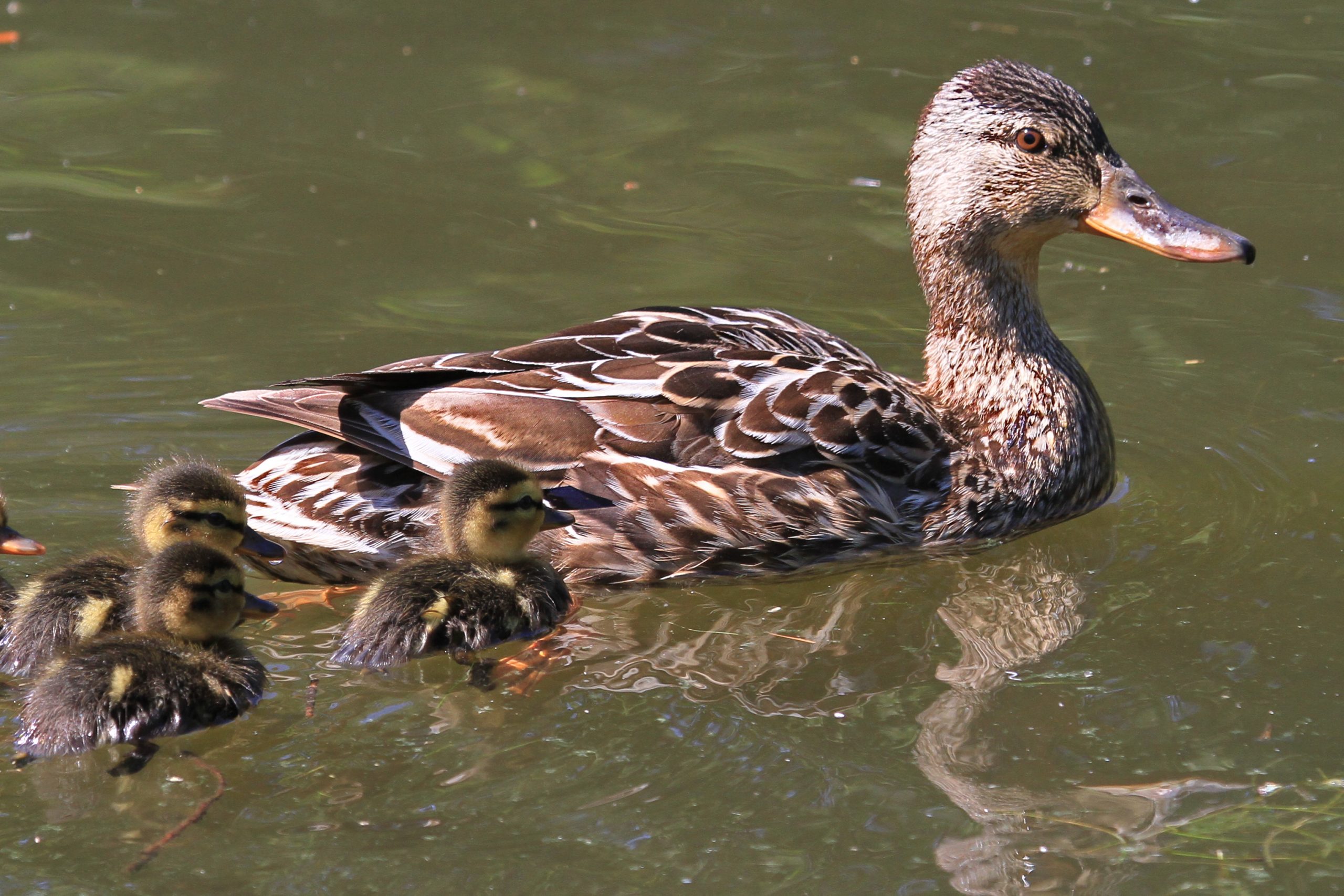Support Us
Since 1979 more than 140,000 animals have been treated by Wildlife Rescue.
Thanks to the support of individuals like you, Wildlife Rescue can provide a lifeline for animals in distress.
Found across North America, Asia and Europe, Mallards are a frequent sighting on lakes, rivers, ponds, and suburban neighborhoods year-round.
Mallards are large ducks with hefty bodies, rounded heads, and wide, flat bills. The male adult is the attractive one of the pair with his shiny green head, a yellow bill, a narrow white neckline, and a dark brown chest. Above his tail and at the end of the body a curly black feather distinguishes him from the female, whose blotchy brown plumage and darker bill sets her apart. Males and females both have orange legs and a spot of blue feathers on their wings that are outlined with white and black and only visible when the wings are folded in.

During spring and summer mating pairs find suitable nesting sites near water or in suburban neighborhoods where they seek ponds, an abundance of food and vegetation to protect their young from predators. The typical clutch size is about 12 eggs and laid between 24 to 48 hours. The male duck usually plays a minimal role in brood care. For babies to survive they stay with their mother for up to two months until they can fledge and become strong and healthy to be on their own. Raising these offspring can be a challenging experience for mothers with natural and human disturbances.
One of the challenges Wildlife Rescue staff and volunteers respond to is problematic nesting on rooftop gardens, courtyards, and balconies, creating challenges for newborns who are unable to safely access water. Wildlife Rescue responds to hundreds of calls every year rescuing mallards and their parents on the rooftops and providing immediate care based on the severity of their health condition or simply releasing them to the nearest safe location.
Another all-too-common challenge faced by mallards and other wildlife is from oil-based pollution. These circumstances have a severe impact on the health of vulnerable species and their young babies.
Patients who fall victim to contamination due to oil pollution arrive at Wildlife Rescue hospital in critical condition and have a hard time regulating their body temperature efficiently. They have poor and weakened feather structure that is critical for waterproofing. Once the oil has touched the bird’s plumage the bird tries to compensate for the loss of body heat by using its fat stores. This process of compensation is extremely exhausting for the bird and causing weakness and health complications if not treated immediately. In other circumstances oiled birds inhale the toxins and substances from the oil while trying to clean off the oil by grooming cause damage to the internal organs.
Recently, two adult female mallards were brought to Wildlife Rescue hospital on two separate occasions, both covered in oil. A health check found the mallards to be severely underweight, cold, dehydrated and suffering from irritation. The implications of these types of circumstances have a detrimental effect on wildlife. Anti-inflammatories and anti-fungal medication are being provided to prevent fungal growth and counteract skin irritation. Highly trained staff and volunteers provide an oil bath that is very specific to temperature, technique, and efficiency. If the first bath does not completely remove the oil on their feathers, they may need a day to recover from the stress of the bath before bathing the bird again to remove any more residue.
Complete recovery from the toxins and waterproofing will take weeks and even months in some cases depending on the extent of exposure and how long the birds were before help arrived.
To ensure wildlife in your local communities are protected a few simple tips will help prevent these incidents from happening
If you come across distressed wildlife, please contact our Support Centre for assistance. Donating to Wildlife Rescue is another easy way to help – we provide rehabilitation to 5,000 animals a year with unique care for each one of them.
Help your local wildlife survive today!